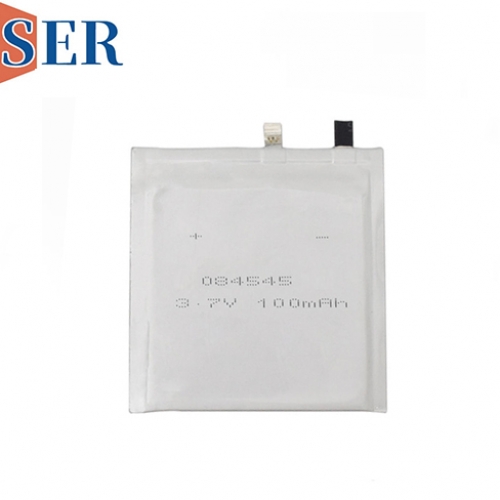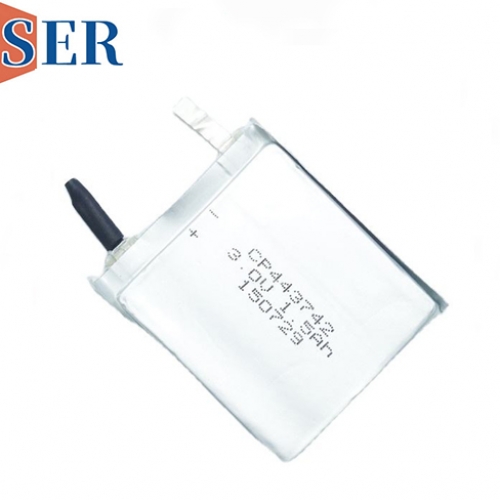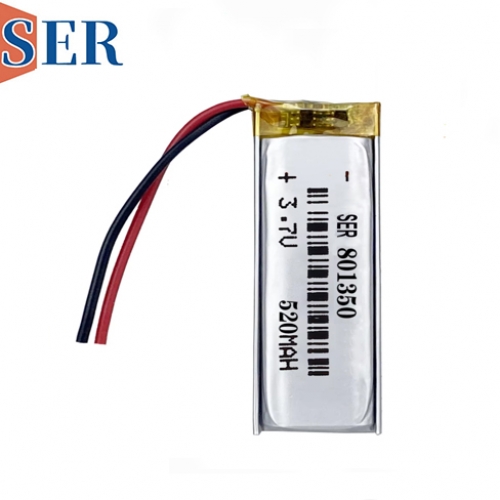Understanding rechargeable ultra thin battery and primary ultra thin battery: What's the Difference?
Understanding rechargeable ultra thin battery and primary ultra thin battery: What's the Difference?

In the era of miniaturization and portability, electronic devices are becoming slimmer, lighter, and more compact—from wearables like smartwatches and fitness trackers to medical devices, IoT sensors, and thin-film electronics. As these devices evolve, their power sources must keep pace, driving demand for ultra thin batteries that combine space-saving design with reliable performance. But not all ultra thin batteries are created equal: the choice between rechargeable ultra thin batteries (primarily Lipo battery and LiFePO4 battery) and primary ultra thin batteries (most commonly LiMNO2 battery in pouch cell form) can make or break a product’s functionality, user experience, and market success.
This comprehensive guide dives deep into the world of ultra thin batteries, unpacking their core technologies, highlighting the key differences between rechargeable and primary options, and helping you determine which type—Lipo battery, LiFePO4 battery, or LiMNO2 battery—best fits your application needs. Whether you’re an engineer designing a next-gen wearable, a product developer optimizing for longevity, or a buyer sourcing components, understanding these differences is critical to making informed decisions.
What Are Ultra Thin Battery?
Before delving into the specifics of rechargeable and primary ultra thin batteries, let’s define the category itself. An ultra thin battery is a compact energy storage solution characterized by its minimal thickness—typically ranging from 0.5mm to 5mm—while maintaining a slim, flexible, or rigid form factor to fit tight spaces in thin devices. Unlike traditional cylindrical or prismatic batteries, ultra thin batteries are often designed as pouch cells (flexible) or thin prismatic cells (rigid), allowing them to conform to the shape of the device or integrate seamlessly into thin-film assemblies.
The rise of ultra thin batteries is fueled by two key trends: the proliferation of “wearable technology” (e.g., smart bands, medical patches, and AR glasses) and the growth of IoT devices (e.g., wireless sensors, smart tags, and thin-film displays) that require long-lasting power without sacrificing size. Ultra thin batteries must balance three critical factors: thickness, energy density, and performance—requirements that vary drastically depending on whether the device needs repeated charging (rechargeable) or single-use reliability (primary).
At the heart of the ultra thin battery market are three dominant technologies: Lipo battery (lithium-polymer), LiFePO4 battery (lithium iron phosphate), and LiMNO2 battery (lithium manganese dioxide). Each offers unique advantages, and their suitability depends on the device’s use case, power demands, and lifecycle expectations.
Rechargeable Ultra Thin Batteries: Lipo Battery and LiFePO4 Battery
Rechargeable ultra thin batteries are designed for devices that require multiple charge-discharge cycles over their lifespan—think smartwatches that need nightly charging, fitness trackers used daily, or portable medical devices that must operate for years with regular recharging. The two most common types of rechargeable ultra thin batteries are Lipo battery (lithium-polymer) and LiFePO4 battery (lithium iron phosphate), each with distinct chemistries, performance traits, and application use cases.
1. Lipo Battery: The Flexible Workhorse of Ultra Thin Rechargeable Power
Lipo battery (short for lithium-polymer battery) is the most widely used rechargeable ultra thin battery in consumer electronics, wearables, and portable devices. Its popularity stems from its exceptional flexibility, high energy density, and ultra-slim form factor—making it ideal for devices that require a battery to fit curved or irregular shapes (e.g., smart bracelets, thin-film headphones, or foldable electronics).
Key Characteristics of Lipo Battery as an Ultra Thin Rechargeable Option
Thickness and Form Factor: Lipo battery excels as an ultra thin battery due to its pouch cell design, which eliminates the rigid metal casing of traditional batteries. Standard ultra thin Lipo batteries range from 0.8mm to 3mm thick, with some custom designs as thin as 0.5mm. This slim profile allows them to be integrated into devices where space is at a premium, such as credit card-sized trackers or thin medical patches.Energy Density: Lipo battery offers one of the highest energy densities among rechargeable ultra thin batteries—typically 150–250 Wh/kg. This means it can store more energy per unit weight and volume, enabling longer runtime between charges for thin devices. For example, a 2mm-thick Lipo battery can power a smartwatch for 1–2 days on a single charge, making it a top choice for wearables.Flexibility: Unlike rigid LiFePO4 or cylindrical batteries, Lipo battery pouch cells are flexible, allowing them to bend or conform to the device’s shape without compromising performance. This flexibility is a game-changer for ultra thin, curved devices like fitness bands or thin-film displays, where a rigid battery would be impractical.Cycle Life: A typical Lipo battery offers 300–500 charge-discharge cycles (to 80% capacity retention), which aligns with the lifespan of most consumer wearables (2–3 years). While this is lower than LiFePO4, it’s sufficient for devices that are regularly upgraded or replaced.Charging Speed: Lipo battery supports fast charging (with the right charger), allowing devices to recharge in 1–2 hours—critical for user convenience in daily-use products.
Applications of Ultra Thin Lipo Battery
Lipo battery is the go-to ultra thin rechargeable option for:
Wearable technology: Smartwatches, fitness trackers, smart bands, and AR glasses.Portable electronics: Thin-film headphones, credit card-sized power banks, and foldable phones.Medical devices: Disposable medical patches (rechargeable versions), portable glucose monitors, and hearing aids.IoT devices: Thin wireless sensors and smart tags that require regular recharging.
2. LiFePO4 Battery: The Durable Ultra Thin Rechargeable Choice
LiFePO4 battery (lithium iron phosphate) is a rechargeable ultra thin battery known for its exceptional cycle life, safety, and stability—making it ideal for devices that require long-term reliability, frequent charging, or operation in harsh environments. While slightly thicker than Lipo battery in ultra thin form (typically 1.5mm–5mm), LiFePO4 battery excels in applications where durability and longevity are prioritized over extreme slimness.
Key Characteristics of LiFePO4 Battery as an Ultra Thin Rechargeable Option
Cycle Life: LiFePO4 battery offers an industry-leading 1,000–2,000 charge-discharge cycles (to 80% capacity retention)—2–4 times more than Lipo battery. This makes it perfect for ultra thin devices that need to operate for 5+ years, such as industrial IoT sensors, medical devices, or smart home gadgets.Safety: LiFePO4 chemistry is inherently stable, with a low risk of thermal runaway, overheating, or explosion—even when punctured or overcharged. This safety profile is critical for ultra thin batteries used in medical devices (e.g., implanted sensors) or devices worn close to the body.Temperature Tolerance: LiFePO4 battery performs reliably in a wide temperature range (-20°C to 60°C), making it suitable for ultra thin devices used outdoors or in industrial settings (e.g., thin environmental sensors or remote monitoring devices).Energy Density: While lower than Lipo battery (100–180 Wh/kg), LiFePO4 battery’s energy density is still sufficient for ultra thin devices that don’t require extreme runtime between charges—such as smart home sensors that recharge every few weeks.Rigid Form Factor: Most ultra thin LiFePO4 batteries are rigid prismatic cells (vs. flexible pouches), which makes them better suited for devices with flat, stable designs (e.g., thin IoT gateways or medical monitors) rather than curved wearables.
Applications of Ultra Thin LiFePO4 Battery
LiFePO4 battery is the preferred ultra thin rechargeable option for:
Industrial IoT: Thin wireless sensors, remote monitoring devices, and smart meters (requiring long cycle life).Medical devices: Implantable medical devices (e.g., thin cardiac monitors), portable diagnostic tools, and long-term patient monitoring patches.Smart home gadgets: Thin door/window sensors, motion detectors, and smart thermostats (needing reliable performance over years).Outdoor electronics: Thin weather stations, GPS trackers, and outdoor wearables (operating in extreme temperatures).
Comparing Rechargeable Ultra Thin Batteries: Lipo vs. LiFePO4
To summarize the key differences between Lipo battery and LiFePO4 battery as ultra thin rechargeable options:
Feature
Lipo Battery
LiFePO4 Battery
Thickness Range 0.5mm–3mm (ultra thin) 1.5mm–5mm (thin to ultra thin)
Energy Density 150–250 Wh/kg (high) 100–180 Wh/kg (moderate)
Cycle Life 300–500 cycles 1,000–2,000 cycles
Flexibility Flexible (pouch cell) Rigid (prismatic cell)
Safety Moderate (risk of thermal runaway if damaged) High (stable, low thermal runaway risk)
Temperature Range 0°C–45°C (moderate) -20°C–60°C (wide)
Best For Wearables, curved devices, short-to-medium lifespan Industrial IoT, medical devices, long lifespan
Primary Ultra Thin Batteries: LiMNO2 Battery (Pouch Cell)
Primary ultra thin batteries (also known as non-rechargeable ultra thin batteries) are designed for single-use applications—devices that require reliable power for months or years without the need for recharging. The most common primary ultra thin battery is LiMNO2 battery (lithium manganese dioxide) in pouch cell form, which offers a unique combination of slimness, long shelf life, and stable discharge performance.
Unlike rechargeable ultra thin batteries (Lipo and LiFePO4), LiMNO2 battery is not designed to be recharged. Instead, it delivers a consistent voltage output until its energy is depleted, making it ideal for devices that are disposable, hard to access for recharging, or require long-term standby power.
Key Characteristics of LiMNO2 Battery as an Ultra Thin Primary Option
Ultra-Slim Form Factor: LiMNO2 battery pouch cells are among the thinnest batteries available, with thicknesses ranging from 0.3mm to 2mm—even slimmer than ultra thin Lipo batteries. This makes them perfect for devices where space is extremely limited, such as thin-film medical patches, disposable sensors, or credit card-sized electronics.Long Shelf Life: LiMNO2 battery has an impressive shelf life of 5–10 years (when stored at room temperature), thanks to its low self-discharge rate (less than 1% per year). This means ultra thin LiMNO2 batteries can be stored for years before use—critical for devices like emergency medical kits or long-term monitoring sensors.Stable Discharge Performance: LiMNO2 battery delivers a consistent voltage (typically 3.0V) throughout its discharge cycle, ensuring reliable performance for devices that require steady power (e.g., IoT sensors, medical monitors, or thin-film displays). Unlike some primary batteries, it doesn’t experience voltage drop toward the end of its lifespan.High Energy Density for Primary Use: LiMNO2 battery offers a high energy density (180–220 Wh/kg) for a primary ultra thin battery, allowing it to power devices for months or years on a single charge. For example, a 1mm-thick LiMNO2 battery can power a disposable IoT sensor for 2–5 years, depending on power consumption.Flexibility and Customization: Like Lipo battery, LiMNO2 battery is available as a flexible pouch cell, allowing it to conform to thin, curved devices (e.g., disposable fitness patches or thin medical sensors). It can also be customized in terms of size, shape, and capacity to fit specific device requirements.
Applications of Ultra Thin LiMNO2 Battery
LiMNO2 battery is the leading ultra thin primary option for:
Disposable medical devices: Thin transdermal patches (e.g., nicotine patches, pain management patches), disposable glucose monitors, and single-use diagnostic tools.IoT sensors: Long-term wireless sensors (e.g., soil moisture sensors, asset trackers), smart tags, and thin environmental monitors (where recharging is impractical).Consumer electronics: Disposable wearables (e.g., fitness trackers for events), credit card-sized calculators, and thin-film toys.Emergency devices: Thin smoke detectors, emergency beacons, and backup power for small electronics (where long shelf life is critical).
Rechargeable vs. Primary Ultra Thin Batteries: Core Differences
Now that we’ve explored the individual traits of Lipo battery, LiFePO4 battery, and LiMNO2 battery, let’s compare rechargeable and primary ultra thin batteries across the key factors that matter most for product design and performance:
1. Lifespan and Usage Cycle
Rechargeable Ultra Thin Batteries (Lipo/LiFePO4): Designed for repeated use, with cycle lives ranging from 300 (Lipo) to 2,000 (LiFePO4) cycles. They are ideal for devices that are used daily or regularly and can be easily recharged (e.g., smartwatches, fitness trackers).Primary Ultra Thin Batteries (LiMNO2): Designed for single use, with a functional lifespan of months to years (depending on power consumption). They are best for devices that are disposable, hard to access (e.g., implanted sensors), or require long-term standby power (e.g., IoT sensors in remote locations).
2. Thickness and Form Factor
Rechargeable Ultra Thin Batteries: Lipo battery is the slimmest (0.5mm–3mm) and most flexible, while LiFePO4 battery is slightly thicker (1.5mm–5mm) and rigid. Both are available in pouch or prismatic form to fit different device designs.Primary Ultra Thin Batteries (LiMNO2): The thinnest option overall (0.3mm–2mm), with flexible pouch cells that conform to the slimmest devices. They are often used in applications where even a 0.5mm difference in thickness matters (e.g., thin-film medical patches).
3. Energy Density and Runtime
Rechargeable Ultra Thin Batteries: Lipo battery has the highest energy density (150–250 Wh/kg), offering longer runtime between charges for daily-use devices. LiFePO4 battery has a lower energy density (100–180 Wh/kg) but compensates with longer cycle life.Primary Ultra Thin Batteries (LiMNO2): Offers a high energy density (180–220 Wh/kg) for a primary battery, enabling long runtime (months to years) without recharging. This is critical for devices that can’t be accessed for charging.
4. Safety and Stability
Rechargeable Ultra Thin Batteries: LiFePO4 battery is the safest, with no risk of thermal runaway and wide temperature tolerance. Lipo battery is less stable, with a small risk of overheating if damaged or overcharged.Primary Ultra Thin Batteries (LiMNO2): Inherently stable, with low self-discharge and no risk of thermal runaway. They are safe for use in medical devices and disposable products where safety is non-negotiable.
5. Cost Considerations
Rechargeable Ultra Thin Batteries: Higher upfront cost than primary batteries, but lower long-term cost for devices that require repeated use (e.g., a smartwatch that’s used for 2 years). LiFePO4 battery is more expensive than Lipo battery but offers better value for long-lifespan devices.Primary Ultra Thin Batteries (LiMNO2): Lower upfront cost, but higher long-term cost if the device requires replacement (e.g., disposable sensors). They are cost-effective for single-use or hard-to-maintain devices.
How to Choose the Right Ultra Thin Battery: Lipo, LiFePO4, or LiMNO2?
The choice between rechargeable (Lipo/LiFePO4) and primary (LiMNO2) ultra thin batteries depends on your device’s specific requirements. Here’s a step-by-step guide to help you decide:
Step 1: Determine if Your Device Needs Recharging
Choose Rechargeable (Lipo/LiFePO4) If: Your device is used daily or regularly (e.g., smartwatch, fitness tracker), can be easily recharged, and requires multiple cycles over 1–5 years.Choose Primary (LiMNO2) If: Your device is disposable (e.g., medical patch), hard to access for recharging (e.g., remote sensor), or needs long-term standby power (5+ years) without maintenance.
Step 2: Evaluate Thickness and Form Factor Requirements
Ultra-Slim (0.3mm–1mm) or Flexible: LiMNO2 battery (primary) or Lipo battery (rechargeable) are the best options. LiMNO2 is slightly thinner, while Lipo offers flexibility for curved devices.Slim (1mm–3mm) and Rigid: LiFePO4 battery (rechargeable) or rigid LiMNO2 battery (primary) work well for flat, stable devices.Curved or Irregular Shape: Lipo battery (rechargeable) or flexible LiMNO2 battery (primary) are ideal, as they can bend to fit the device.
Step 3: Prioritize Key Performance Traits
Long Runtime Between Charges: Lipo battery (rechargeable) offers the highest energy density for daily-use devices.Long Lifespan (5+ Years): LiFePO4 battery (rechargeable) or LiMNO2 battery (primary) are better choices—LiFePO4 for rechargeable devices, LiMNO2 for single-use.Safety and Temperature Tolerance: LiFePO4 battery (rechargeable) or LiMNO2 battery (primary) are safer and more stable





